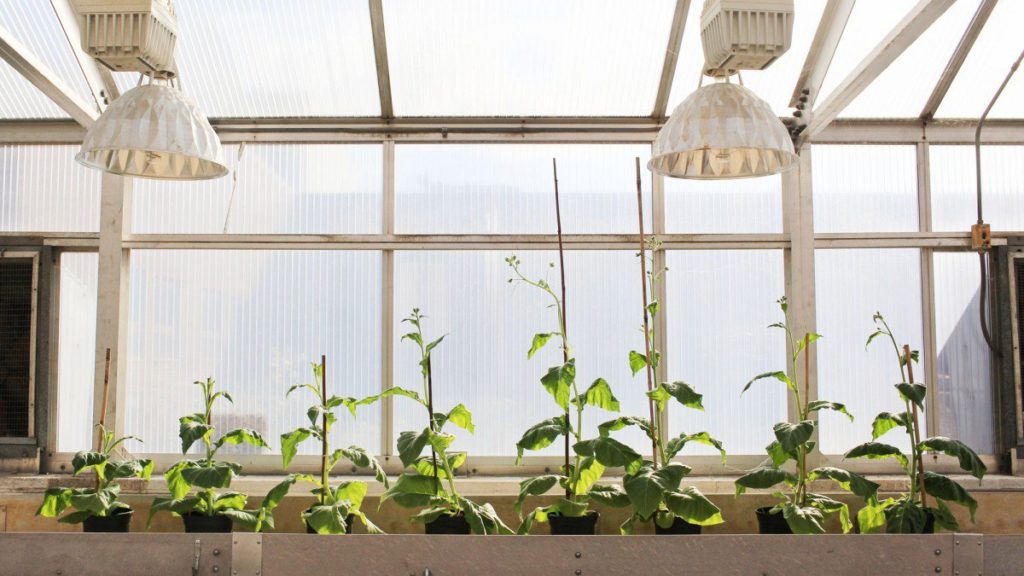Tobacco plants that grow as much as 40% larger than usual have been designed by genetic engineers in Illinois. This is the first step in producing larger plants like potatoes which could be distributed to the poor countries throughout the world.
The genetically modified plants are wider and taller from the regular ones. As a team at the University of Illinois and the United States Department of Agriculture said, they gave tobacco something called “photorespiratory bypass”. It is a kind of a cassette of genetic changes that let the plants turn sunlight into energy more efficiently.
What is interesting, in 2016 University of Illinois bioengineers managed to make tobacco plants grow 20% bigger by helping them respond more quickly to changes in light and shade. This time actually they made plants that use less energy during photorespiration, which is a process that plants need to clear out a toxin called glycolate created during photosynthesis. To achieve this, the team had to add about 16,000 letters of novel DNA instructions to tobacco plants.
You are probably wondering why all of these experiments were carried out with the use of tobacco. Not only do tobacco plants grow quickly, but also are easy to genetically modify. The team is known to be already working on similar gene changes to potatoes, soybeans , and cowpeas.
However, as Heike Sederoff, a plant scientist at North Carolina State University claims, there is a long way for researchers to prove that these modifications actually work. He believes that we should not expect such plants in the markets earlier than 20 years from now.
Nevertheless, there are plenty of philanthropes and foundation which are hoping that genetic engineering could lead to a huge step forward in farm productivity. Scientists at Illinois were donated by more than $80 million by the Bill & Melinda Gates Foundation.
The goal of the whole project, which is called RIPE (Realizing Increased Photosynthetic Efficiency) is to increase the yields of staple food crops and improve global food security. As we can find out from their website, the Green Revolution’s advances have already reached their biological limits. They find it crucial to keep pace with this century’s growing population (which is forecasted to grow to nearly 10 billion by 2050) and provide food to the biggest possible number of people by making new innovations to agriculture industry.
There are also other organizations trying to find new solutions, like C4 consortium led by Paul Quick at the International Rice Research Institute (IRRI) in the Philippines, which is developing a process called C4 photosynthesis. It boosts plants’ growth by capturing carbon dioxide and concentrating it in specialized cells in the leaves, which allows the photosynthetic process to operate much more efficiently. Researchers claim that engineering C4 photosynthesis into rice and wheat could increase yields per hectare by roughly 50 percent. Alternatively, they believe that it would be possible to use far less water and fertilizer to produce the same amount of food.
What are your thoughts on this topic? Would you buy such genetically modified plants without any concerns? Let me know down below!
Sources:
https://www.technologyreview.com/s/535011/supercharged-photosynthesis/
https://ripe.illinois.edu/objectives/our-story
https://www.technologyreview.com/s/612710/gene-engineers-make-super-sized-plants-that-are-40-larger/


